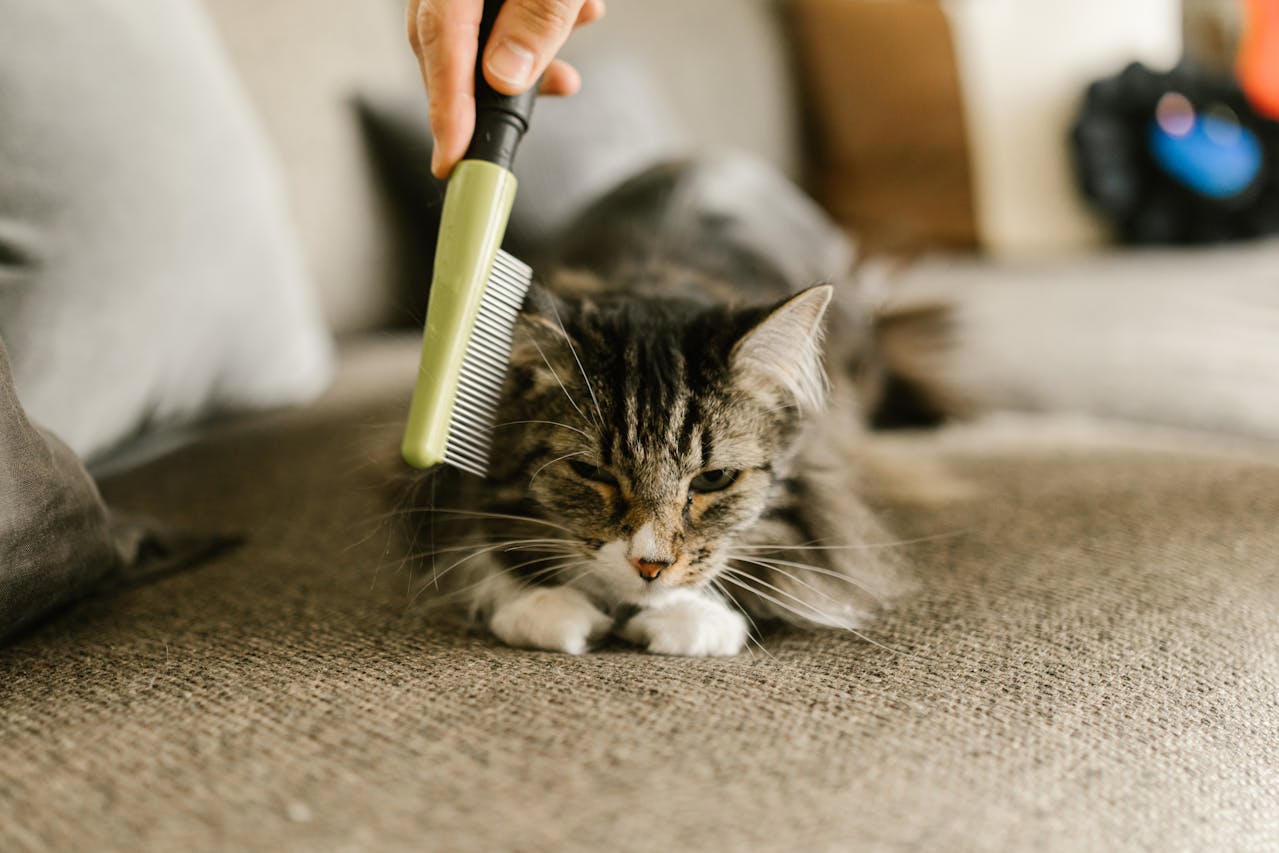Dogs
Jan 19, 2024
Dog grooming is a lot more than simply giving your dog a bath. Just as we need to brush our teeth and make regular trips to the barber or hair salon, so do our dogs.
Grooming your dog covers all areas needed to maintain their physical appearance and hygiene, and that includes tasks such as trimming nails, cleaning ears, and brushing down their fur. This helps keep their coats clean, healthy, and free from mats and tangles.
As a responsible dog owner, you have probably pondered an age-old question: how often do you really need to groom your dog?
Well, because dogs come in all manner of shapes, sizes, coat lengths, and personalities, the answer varies just as greatly. Find out the best grooming routine for your furry pet with this helpful guide.
Determining Your Dog’s Coat Type

Your dog’s breed answers a lot of questions. One of which is the kind of coat they have. However, if your dog does not fall under one breed, don’t worry. You can easily determine their coat type based on the following descriptions.
Smooth Coat
A smooth coat is exactly what you think it is: a short-haired dog with fur that is smooth to the touch. Some well-known examples of these dogs are beagles, rottweilers, dalmatians, and basset hounds.
These kinds of dogs have sleek fur that sticks close to their body and appears almost shiny. When it comes to grooming, they are typically low maintenance, but there are still some steps you can take to ensure a healthy and shiny coat.
Brushing a smooth-coated pup once or twice a week is usually enough to remove any loose hair and dirt, as well as distribute their natural oils throughout the coat. These oils are necessary to maintain the dog’s natural shine, so aiming for a bath once every 2-3 months is sufficient.
Double Coat
Compared to the smooth-coated beagle, dogs with a double coat are much fluffier. Think of the Alaskan malamutes, the bear-like Chow Chows, and the snow-loving Siberian huskies. These dogs achieve their iconic fluffiness thanks to two layers of fur: a dense insulating undercoat and a longer, protective outer coat.
The undercoat regulates the dog’s body temperature by providing warmth in the cold and insulation against the heat, while the outer coat helps repel moisture, dirt, and debris.
Keeping your double-coated pup well-groomed is essential for its comfort amidst the changing weather conditions. These dogs are especially prone to shedding, so grooming once every 4-6 weeks and brushing every other day is ideal.
However, during seasonal shedding periods, more frequent grooming may be necessary to keep all that excess fur at bay.
Curly Coat
Have you ever marvelled at a Bichon Frise or a poodle and wondered how they got those magnificent curls?
Well, these dogs are naturally curly-coated, but they do need extra care and attention to maintain the signature curls that we all know and love. Grooming every 3-4 weeks is needed to keep their fur from growing too shaggy and tangles.
Wire or Coarse-Coated
Last on our list are the awesomely rugged wire-coated dogs. Bred more for hunting than for beauty contests, these dogs have distinctive rough and coarse outer coats that reflect their long history as working dogs. If your dog’s coat texture is similar to that of a wire fox terrier or an otterhound, then this part is for you.
Like dogs with a double coat, wire-coated dogs also have a fluffier undercoat hidden beneath their coarse fur. They require grooming at least once every 4-8 weeks. However, their coats should be brushed almost daily to prevent matting and get rid of any knots.
Other Factors That Influence Grooming Needs
Your dog’s grooming schedule does not depend solely on their coat type, although it is the most important factor. To keep your dogs looking their best, it’s essential to account for additional factors, such as the local climate and whether your dog tends to spend more time indoors or outdoors.
Grooming With the Season
As the seasons change, so will your dog’s fur. They grow some, they shed some. Lather, rinse and repeat. Some dogs are more prone to seasonal shedding than others, such as the double-coated types, which are more likely to shed large amounts of fur in preparation for the changing seasons.
Many dogs tend to shed more during the spring and fall seasons. During spring, they shed their thick winter coats to prepare for the warmer summer months, while fall shedding occurs to shift their coats to better shield against the cold.
Your Dog’s Activity Level and Lifestyle
Dogs that spend more time outdoors get dirtier more often than your average indoor dog. In general, most dogs can go a month without needing a bath, but that cannot be said for the dog that just rolled around in a muddy puddle in its backyard.
Each dog is unique, and ultimately, it’s essential to assess your dog’s individual needs based on their activity level, coat type, and lifestyle.
The Benefits of Professional Dog Grooming
Although regular grooming at home makes a big difference to your dog’s overall wellbeing, having your dog groomed by a professional has many worthwhile benefits.
A professional dog groomer is equipped with all the tools and expertise to address issues like matting and shedding. And, they can spot potential skin problems early on, such as dryness, irritation, or infections.
Most importantly, skilled groomers can provide a stress-relieving experience for dogs who–more often than not–despise having their nails trimmed and their ears cleaned.
With professional pet grooming, these important tasks are handled with patience and expertise, creating a more comfortable and less stressful experience for both dog and owner.





